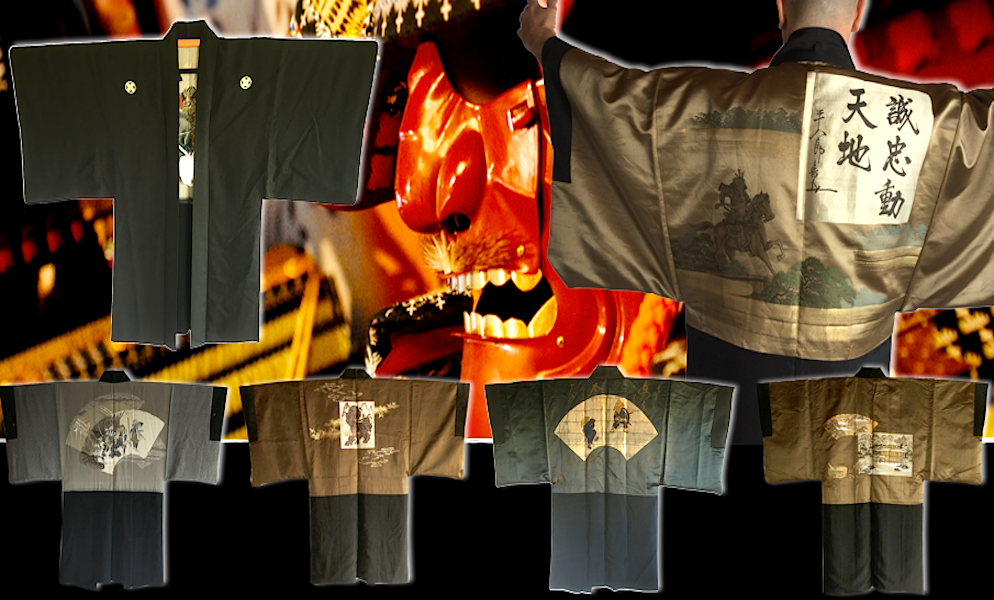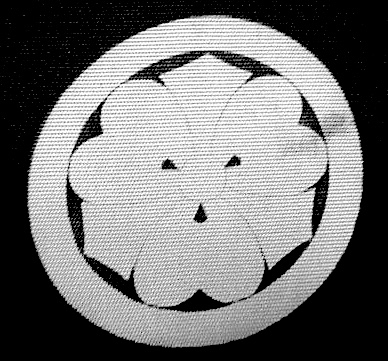🧥 Buyer's Guide: How to Choose a Traditional Japanese Haori for Men

Japanese haori for men – Wear the timeless elegance of Japan with a traditional garment full of soul. Our antique silk haori, adorned with kamon (家紋 – family crests), are genuine historical pieces sourced directly from Kyoto. Whether you are a martial arts practitioner, a collector, or simply drawn to Japanese aesthetics, this guide will help you choose the haori that best reflects your spirit.
 🧘♂️ Why Choose an Antique Haori?
🧘♂️ Why Choose an Antique Haori?
- ✔️ 100% authentic, made in Japan
- ✔️ Sustainable and ethical: a second life for a noble garment
- ✔️ Historical value: each haori tells a story
- ✔️ Ideal for martial arts, ceremonies, or interior decoration
- ✔️ Combines elegance and minimalism, wearable in modern fashion
🎯 Which Haori Should You Choose?
🔸 For Martial Arts Practice (Iaido, Ninjutsu, Kenjutsu)
Choose a fluid, minimal haori with traditional family crests.
- Futatsu Hiki Montsuki (ivory lining)
- Kabuki (theatrical motif)
- SanSuiGaden (zen landscapes)
🔸 For Ceremonies or Formal Occasions
Opt for a refined haori with golden linings or noble symbolism.
- Ginkakuji Kyoto (Silver Pavilion)
- Takanohane Tora (majestic tiger)
- Meoto Iwa (sacred wedded rocks)
🔸 For Decoration or Collectors
Choose a piece with historical or artistic significance.
- Busho no Ikusa (naval battle & warrior general)
- Yomeimon Nikko (shrine gate in Nikko)
🔸 For Everyday Chic Wear
Pair a lightweight haori with jeans or casual trousers for a Japanese-modern look.
- Aki no Nihon Fūkei (autumn landscape)
- Botan Kuyo (noble peony flowers)
🌸 The Meaning of Kamon (家紋 – Family Crests)
Each kamon carries ancestral meaning and often represents the identity or virtues of a samurai clan.
- Takano Hane (鷹の羽) – pride, falcon nobility – Takanohane Tora
- Katabami (片喰) – perseverance and resilience – Meoto Iwa
- Kuyo (九曜) – celestial harmony, Hosokawa clan – Botan Kuyo
- Tachibana (橘) – longevity and prosperity – Aki no Nihon Fūkei
- Yotsume (四つ目) – esoteric protection – Yomeimon Nikko
 🍁 Which Haori for Each Season?
🍁 Which Haori for Each Season?
- Spring 🌸: Botan Kuyo, SanSuiGaden
- Summer 🌊: Meoto Iwa, Takanohane Tora
- Autumn 🍂: Aki no Nihon Fūkei, Ginkakuji Kyoto
- Winter ❄️: Kabuki, Yomeimon Nikko, Futatsu Hiki Montsuki
🧑🎨 Which Haori Suits Your Personality?
| Personality | Recommended Haori |
|---|---|
| The spiritual warrior | Futatsu Hiki Montsuki, Busho no Ikusa |
| The artist or poet | Aki no Nihon Fūkei, Botan Kuyo |
| The sage or spiritual seeker | Yomeimon Nikko, Ginkakuji Kyoto |
| The collector | Meoto Iwa, Takanohane Tora |
| The modern minimalist | SanSuiGaden, Kabuki |
🧼 How to Care for an Antique Haori
- Air it regularly away from direct sunlight and moisture
- Dry-clean only
- Store folded in the traditional Japanese method
- Handle gently – preserve the silk and embroidery
🔗 Discover Our Exclusive Collection
All our haori are hand-selected in Kyoto and shipped within 3–4 business days. Each model includes detailed dimensions in cm and inches.
👉 Browse the full collection of men's Japanese haori
Men's Japanese haori | Samurai haori | Antique silk haori | Kyoto traditional clothing | Montsuki haori
